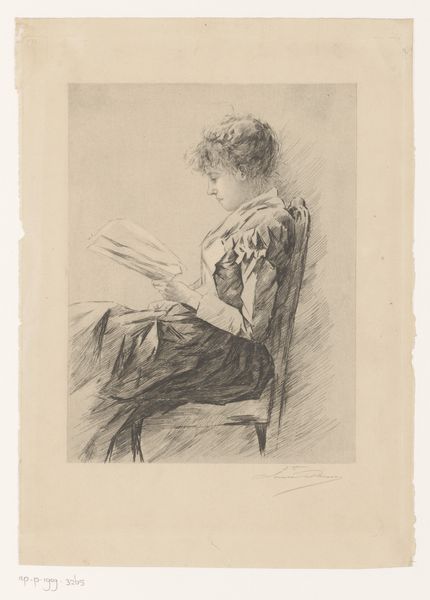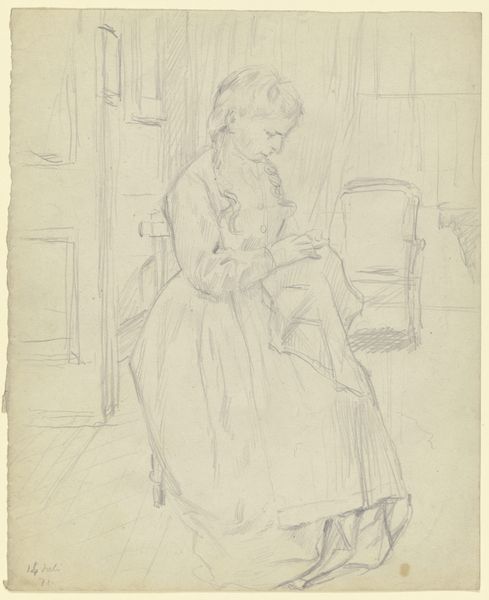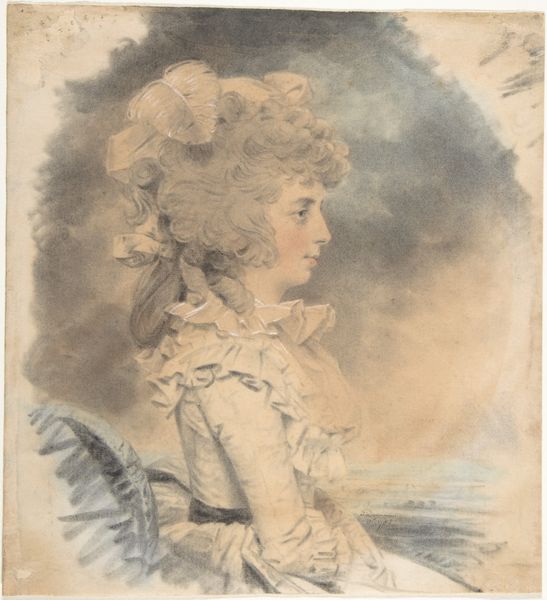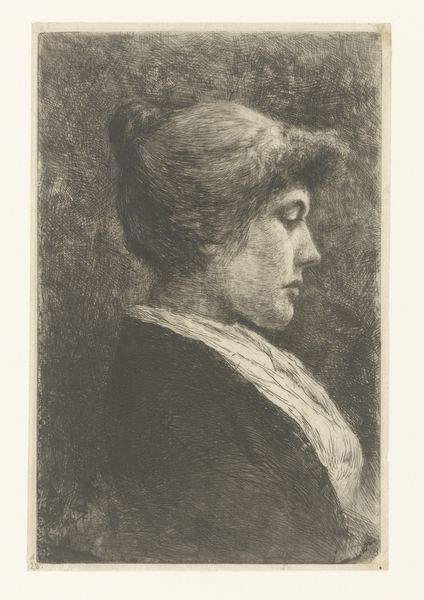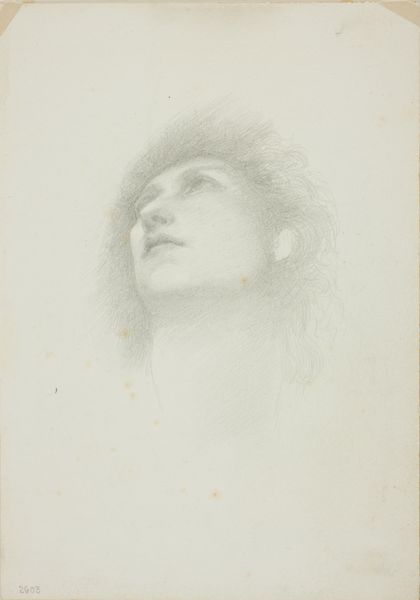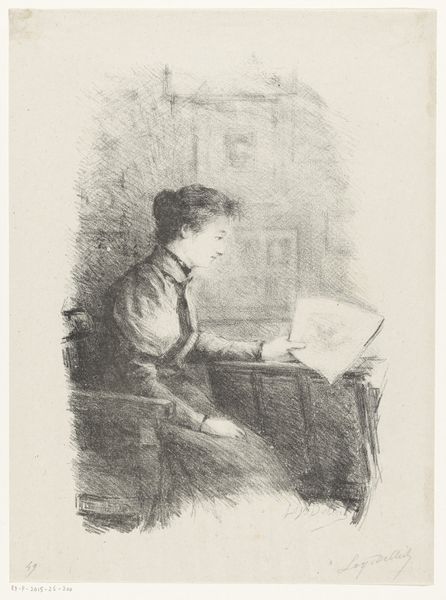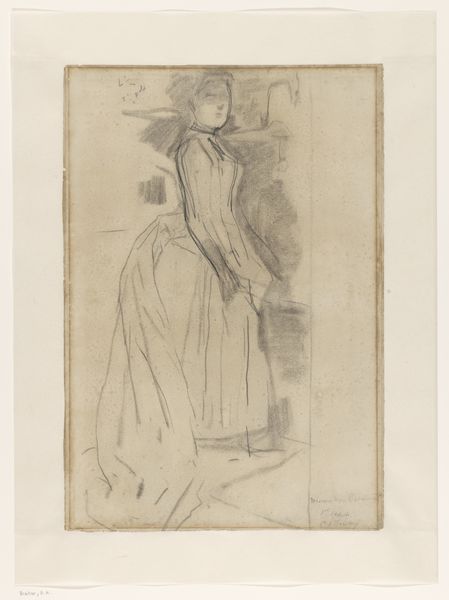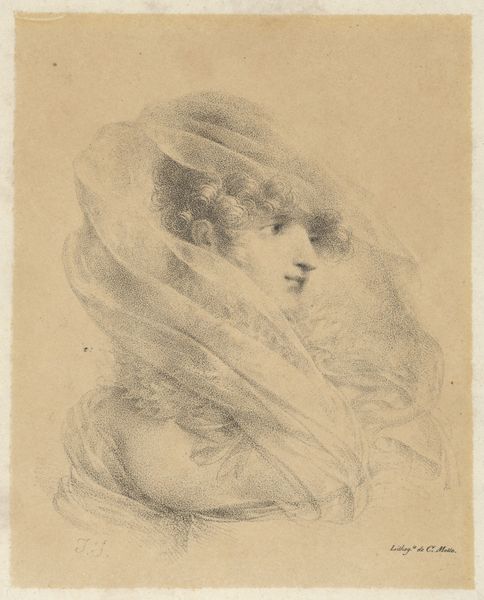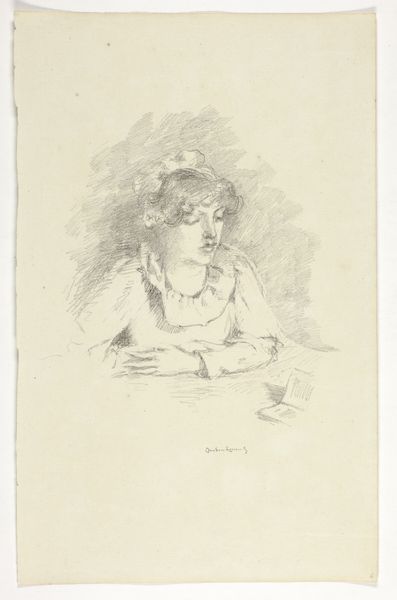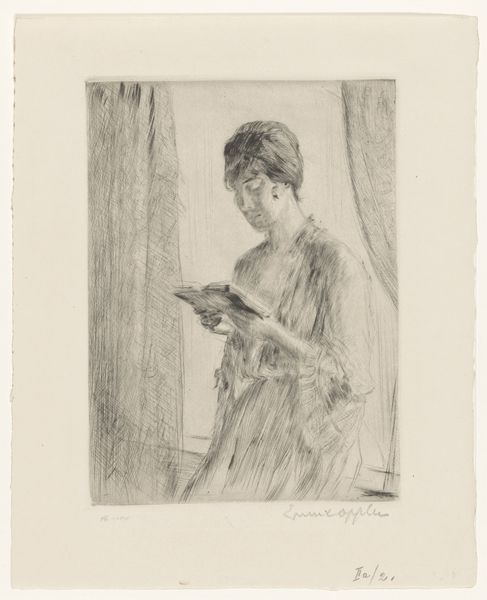
drawing, lithograph, print, etching, paper, pastel
#
portrait
#
drawing
#
lithograph
# print
#
impressionism
#
etching
#
paper
#
portrait drawing
#
watercolour illustration
#
pastel
#
watercolor
Dimensions: height 610 mm, width 450 mm
Copyright: Rijks Museum: Open Domain
Curator: Before us we have "Lezende vrouw", or "Reading Woman", by Henri Boutet. Its creation date ranges from 1861 to 1919. It is an etching and lithograph, likely with pastel and watercolour details, on paper. Editor: It’s…soft. The hazy colors and gentle lines create a tranquil, almost dreamlike quality. The overall composition has this very quiet elegance about it. Curator: Indeed. Boutet was capturing a certain ideal, a bourgeoise vision of femininity tied to domesticity and intellectual pursuit. Consider the rise of literacy among women in this period and the subtle shift in social expectations that came with it. Editor: I notice the use of color. It's very restrained, with predominantly pastel shades. The composition creates a sense of balance and harmony. Notice how the book is central but how all the strokes ultimately draw us to her face. Curator: And the absence of stark lines reinforces a deliberate ambiguity, blurring the boundaries between the personal and the performative, between the individual woman and the broader category of “womanhood” as it was being constructed. Editor: The textures, too, deserve attention. You can almost feel the softness of her shawl. There is subtle modeling used to shape the folds of her clothing, giving it a three-dimensionality despite the flat plane. Curator: This connects with how women of the period began accessing previously male dominated domains of culture and art. The way her head is tilted slightly downward might represent a type of subversive action by way of embracing intellectual expression. Editor: Do you think the colors used would imply this type of representation as well? I think there is almost an under-defined sense of place here, giving me a placid sense of relaxation more so than any sense of political or social anxiety. Curator: I think we’re both right in this case, especially as it remains undated during that period, given a sense of dynamic tension, capturing an era of significant social and artistic change, and how individuals navigated these transformations. Editor: It definitely prompts consideration of composition and its effect. It encourages me to study form to fully perceive the woman in her domestic sphere as much as consider her position within society. Curator: And for me, it’s a prompt to consider this unnamed reader in relation to women then and now. A question on whether reading can be a radical act depending on who’s holding the book.
Comments
No comments
Be the first to comment and join the conversation on the ultimate creative platform.
